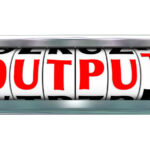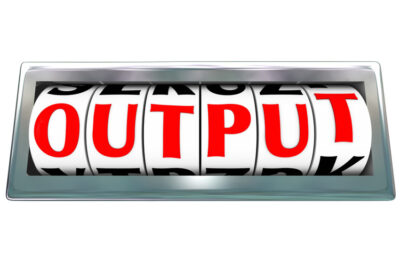Performance management software (PMS) is a type of HR software that enables organizations to manage, track, and evaluate employee performance. PMS can provide HR managers with valuable insights and analytics to make data-driven decisions and support the development of their employees. In this article, we will delve into the definition of performance management software and its essential features and benefits.
Definition of Performance Management Software
Performance management software (PMS) is a technology-based tool that enables organizations to manage, monitor, and evaluate employee performance. PMS can automate various HR processes, including setting performance goals, providing feedback and recognition, conducting performance reviews, and creating development plans. PMS can also provide HR managers with valuable insights and analytics to assess employee performance, identify areas for improvement, and reward top performers.
Features of Performance Management Software
Performance Goals: PMS can help HR managers set performance goals and expectations for employees. This includes defining SMART (Specific, Measurable, Achievable, Relevant, and Time-bound) goals that align with the organization’s mission and vision. PMS can also enable employees to track their progress and receive feedback on their performance towards achieving their goals.
Feedback and Recognition: PMS can provide employees with regular feedback and recognition on their performance. This includes providing managers and colleagues with tools to provide feedback, such as 360-degree feedback or real-time feedback. PMS can also provide HR managers with the ability to recognize and reward top performers and provide incentives for achieving performance goals.
Performance Reviews: PMS can automate the performance review process, including scheduling reviews, providing review templates, and tracking employee progress. PMS can also enable HR managers to customize review criteria and questions to align with the organization’s needs and values.
Development Plans: PMS can help HR managers create development plans for employees to improve their skills and competencies. This includes identifying areas for improvement and providing resources and training opportunities to support employee development. PMS can also enable employees to track their progress towards their development goals.
Analytics and Reporting: PMS can provide HR managers with valuable insights and analytics on employee performance. This includes generating performance reports and dashboards that highlight key performance indicators (KPIs) and trends. PMS can also enable HR managers to identify top performers, assess the effectiveness of performance management programs, and make data-driven decisions to support employee development.
Benefits of Performance Management Software
Improved Employee Performance: PMS can enable organizations to set clear performance goals and expectations, provide regular feedback and recognition, and support employee development. This can help improve employee performance and productivity, leading to better business outcomes and increased competitiveness.
Increased Employee Engagement: PMS can provide employees with opportunities to receive feedback, recognition, and development support, leading to increased engagement and job satisfaction. This can help reduce employee turnover and improve retention rates.
Streamlined Performance Management Processes: PMS can automate various HR processes, including performance goal setting, feedback and recognition, performance reviews, and development planning. This can help HR managers save time and resources, enabling them to focus on other critical HR tasks.
Data-Driven Decision Making: PMS can provide HR managers with valuable insights and analytics to assess employee performance, identify areas for improvement, and reward top performers. This can help HR managers make data-driven decisions to support employee development and improve business outcomes.
Improved Employee Development: PMS can enable HR managers to create customized development plans for employees to improve their skills and competencies. This can help employees take ownership of their career development and improve their potential for career growth within the organization.
Performance Management Software Best Practices
While performance management software (PMS) is typically used to manage employee performance once they have been hired, it can also be a powerful tool for recruiting and hiring top talent. In this article, we will discuss the best practices for using performance management software to recruit and hire top talent.
Define Your Recruitment Goals: The first step in using PMS to recruit and hire top talent is to define your recruitment goals. This includes identifying the key skills, competencies, and attributes that you are looking for in your ideal candidate. PMS can help you create job descriptions that clearly communicate these requirements to potential candidates.
Use PMS to Source Candidates: PMS can help you source candidates by automating various aspects of the recruitment process. This includes posting job openings to various job boards and social media platforms, tracking applications, and screening candidates. PMS can also provide valuable analytics and insights to help you identify the most effective recruitment channels and sources.
Use PMS to Screen and Assess Candidates: PMS can help you screen and assess candidates by automating the initial screening process. This includes using algorithms and AI to identify candidates who meet the key requirements outlined in your job description. PMS can also provide pre-employment assessments to evaluate candidates’ skills, competencies, and attributes.
Use PMS to Schedule and Conduct Interviews: PMS can help you schedule and conduct interviews by automating various aspects of the interview process. This includes scheduling interviews, providing interview templates and questions, and recording interview responses. PMS can also provide valuable analytics and insights to help you evaluate candidates’ performance in the interview process.
Use PMS to Evaluate Candidates: PMS can help you evaluate candidates by providing a centralized platform to manage candidate data and feedback. This includes tracking candidates’ progress through the recruitment process, storing candidate resumes and application materials, and providing a platform for HR managers and hiring managers to provide feedback and evaluations.
Use PMS to Communicate with Candidates: PMS can help you communicate with candidates by automating various aspects of the communication process. This includes sending automated email responses to candidates, providing real-time feedback on their application status, and communicating important information about the recruitment process. PMS can also provide a centralized platform for candidates to ask questions and provide feedback.
Use PMS to Onboard New Hires: PMS can help you onboard new hires by providing a centralized platform to manage onboarding tasks and activities. This includes tracking new hires’ progress through the onboarding process, providing new hire orientation materials, and tracking new hire performance and development.
Benefits of Using PMS for Recruitment and Hiring
Improved Recruitment Efficiency: Using PMS can streamline the recruitment process, saving time and resources. PMS can automate various aspects of the recruitment process, including sourcing candidates, screening and assessing candidates, scheduling and conducting interviews, and communicating with candidates.
Improved Candidate Quality: PMS can help you identify and attract top talent by automating the screening and assessment process. This can help ensure that you are evaluating candidates based on their skills, competencies, and attributes, rather than subjective factors like resume format or interview performance.
Improved Hiring Decision-Making: PMS can provide valuable insights and analytics to help you make data-driven hiring decisions. This includes tracking candidate data and feedback, evaluating candidates’ performance in the recruitment process, and identifying the most effective recruitment channels and sources.
Improved Candidate Experience: Using PMS can provide a more positive candidate experience, which can improve your organization’s reputation and help attract top talent. PMS can provide real-time feedback on the application status, communicate important information about the recruitment process, and provide a centralized platform for candidates to ask questions and provide feedback.








